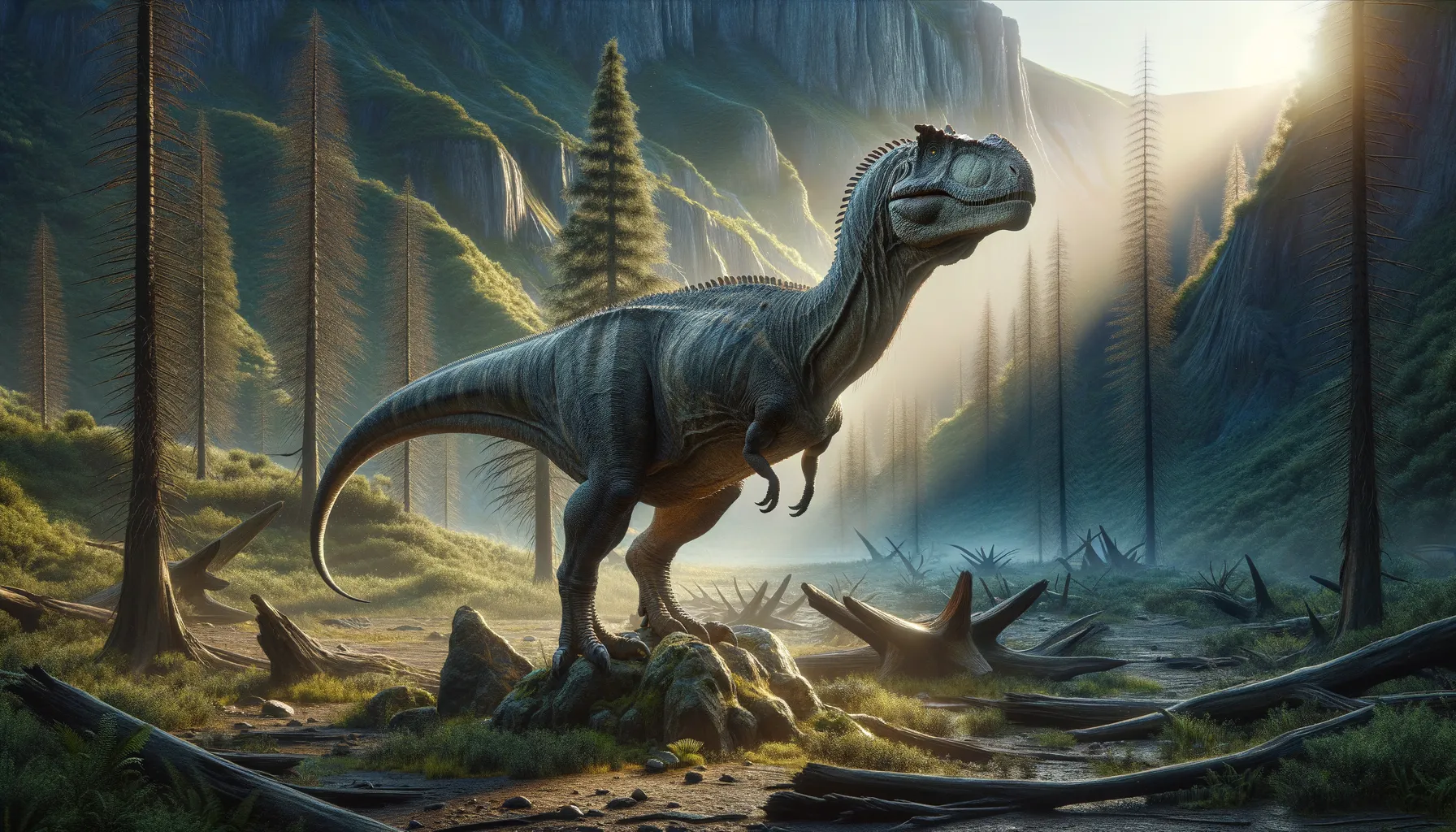
Embasaurus
An ancient predator with a strategic mind!
Period
Cretaceous
Length
Around 8 meters long.
Height
Roughly 3 meters tall.
Weight
Approximately 1,200 kilograms.
Embasaurus was a mid-sized dinosaur that roamed during the Cretaceous period. It is known for its distinct physical features and adept survival strategies in a challenging prehistoric environment. Its fossil remains have provided significant insights into the life of predatory dinosaurs, showcasing adaptations that allowed it to hunt efficiently. Although not the largest dinosaur of its time, Embasaurus thrived in a diverse ecosystem where it played an important role.
Diet
Embasaurus primarily fed on smaller herbivorous dinosaurs. It was a carnivore, utilizing its sharp teeth and keen senses to track and capture prey effectively.
Hunting
Embasaurus was believed to have hunted alone. Its method relied on stealth and patience, waiting for the perfect moment to strike smaller, unsuspecting animals.
Environmental challenges
The Embasaurus faced fluctuating climates and occasional food shortages due to competition with other carnivores. Changes in vegetation and the movement of herbivore herds required adaptability in hunting locations and strategies. Predators like larger theropods posed threats but also maintained the balance of the ecosystem. Embasaurus adapted to environmental pressures, developing efficient ways to sustain itself through tough periods.
Speed
Moderate, capable of short bursts.
Lifespan
Estimated to be around 20-30 years.
First discovery
First discovered in the 1970s in Mongolia.
Fun Facts
- Embasaurus was a dinosaur from the early Cretaceous period, around 120 million years ago.
- The name 'Embasaurus' comes from the Emba region in Kazakhstan, where its remains were found.
- Very little is known about Embasaurus since it is based on only a few bone fragments.
- Embasaurus was likely a theropod, which means it was probably a bipedal carnivore.
- Due to the scarcity of fossils, scientists have to use informed guesses to understand its appearance and behavior.
- Embasaurus shares its habitat with other early Cretaceous dinosaurs of Central Asia.
- It provides important clues about the diversity of dinosaur species in the region during its time.
Growth and Development
Embasaurus hatchlings grew rapidly in their early years to avoid predation. Juveniles had a diet that transitioned from insects and small animals to more substantial prey as they matured. The species exhibited marked changes in size and strength with each growth stage. This growth required substantial nutritional support from an early age.
Habitat
Thriving in diverse environments, Embasaurus occupied forested regions rich in foliage and open plains which were ideal for hunting. These habitats provided cover and ample prey opportunities. Seasonal changes required migration to areas with adequate food resources. Fossil evidence suggests it was quite adaptable, moving across various landscapes as environmental conditions shifted.
Interaction with other species
Embasaurus was a dominant predator, often competing with other theropods for prey. It also had to be cautious of larger predators which could pose a threat. Its role in the food chain helped maintain the balance between herbivores and predators. Evidence from fossil sites shows interactions through shared hunting grounds and possibly scavenging from leftover kills.
Natural lifespan
Embasaurus had an average lifespan of approximately 25 years.
Reproduction
Reproduction among Embasaurus was oviparous, laying clutches of eggs in concealed nests. Parental care might have been minimal, with hatchlings being relatively self-sufficient. The eggs' incubation was likely influenced by the surrounding environment's temperature. Hatchlings needed to evade predators quickly after hatching to survive.
Social behaviour
Embasaurus was generally solitary, except during mating season when pairs might form briefly. Social behavior was limited but involved occasional interactions over territory and food resources. Fossil evidence does not indicate herd behavior, suggesting independence was key to its lifestyle. The solitary nature reduced competition and ensured ample resources for individuals.
Fossil locations
Fossils of Embasaurus have predominantly been found in Mongolia. These findings have contributed valuable information about its anatomy and lifestyle. The fossil sites belong to regions known for a high density of dinosaur remains, offering context to its ecosystem. Nearby discoveries include those of other species, providing a fuller picture of the ecological dynamics.
